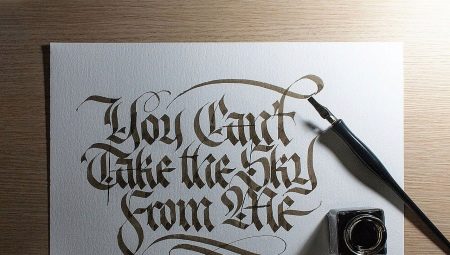Most contemporary people, when mentioning calligraphy, will first remember the famous Japanese school of this exquisite workmanship. But Europeans also have something to brag about, and many European styles are in no way inferior to Eastern ones in beauty and complexity. Therefore, it is worth considering the features of Gothic calligraphy and familiarize yourself with its history.
History reference
The first language spoken in almost all of Europe was Greek. For his recording, they used the Greek alphabet with even faces and sans-serifs. Created during the Roman Empire, on the basis of the Greek, the Latin alphabet already contained in most of its styles dashes in capital lettersHowever, other decorative elements were not popular.
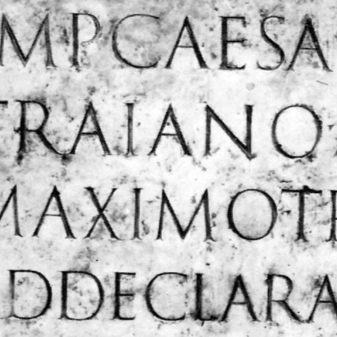
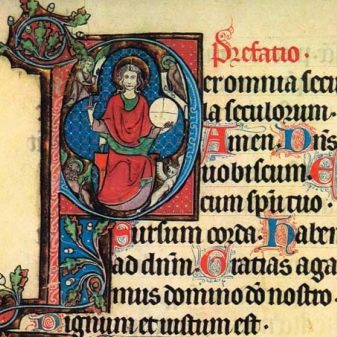
With the spread of Christianity, a large number of religious books that corresponded manually in monasteries. Each of the books was a unique work, so the monks who worked on them gradually modified the styles, trying to make the books more beautiful and solemn. At the same time, books should have been understood by residents of other countries, so unified writing systems were gradually developed. By the middle of the 10th century, the most common style in Europe was created in France Carolingian writing system.

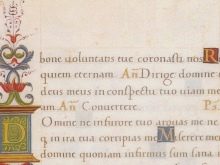

It was on its basis that the first and most common of the Gothic fonts appeared - texture.
This letter got its name because the text he wrote uniformly covered the page area, forming a semblance of fabric texture.
The characteristic appearance of Gothic letters is due to the fact that feathers cut at a certain angle were used for writing. Finally, this version of writing took shape by the 13th century, and for a long time books and textbooks throughout Europe were written precisely with the texture and its variants. The same font was used to create the famous Gutenberg Bible - the first European printed book.
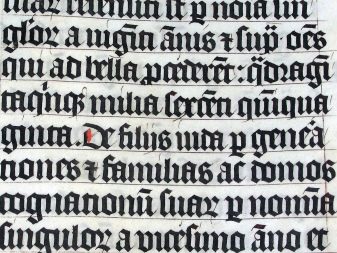
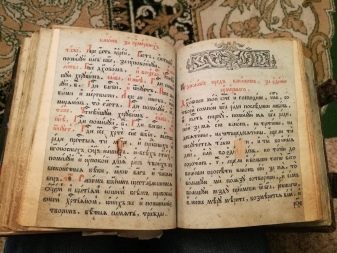
In Italy, from the beginning of the XII century, a semi-Gothic font was spread rotunda, which contained serifs, but was generally more rounded than texture.
For the first time, the term "Gothic writing" was applied to texture and its variants by artists Italian renaissance in the 15th century.
Being supporters of a return to the aesthetics of antiquity, Renaissance figures considered the texture a “barbaric” version of the letter, and therefore called it after one of the most famous German barbarian tribes.
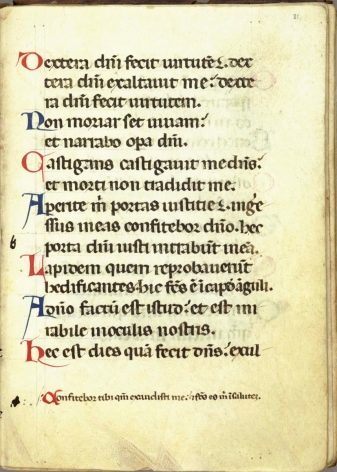

Under the influence of the Renaissance, Gothic was supplanted. antiqua - Fonts familiar to most modern people with a minimum of decorative touches. The longest Gothic remained popular in Germany. In the same place in the XVII century a modernized version of the texture, known like a fracture. This font was even more decorative than other versions of the Gothic, as, in addition to serifs, it also contained a large number of curls and kinks. By the beginning of the 20th century, almost all of Europe had massively switched to antiqua. The widespread use of Gothic was preserved only in Germany and the Baltic countries, but after the Second World War Gothic fonts were also abandoned.
Currently, Gothic fonts, due to the difficulty of reading them, are mainly used in decoration. Most books, periodicals, and other types of texts are printed with antiqua options.
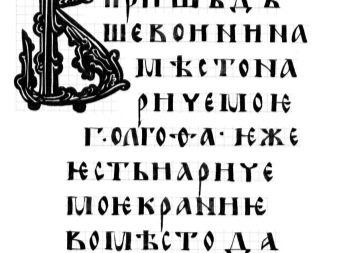
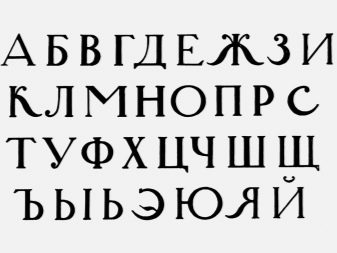


Gothic Font Features
Gothic is one of the most recognizable writing options. Her characteristic features:
- vertically elongated letters (to the greatest extent this is characteristic of the texture);
- compactness (letters are located close to each other, sometimes literally at a stroke distance);
- a large number of serifs and other decorative elements;
- a large number of lines in letters (often they consist of several separate elements);
- "Broken" inscription of most letters (not used in rotunda);
- a combination of letters of lines of different thicknesses (often, in addition to the main massive contour, letters, especially lowercase, contain thin decorative lines).
In calligraphic gothic ligatures prevalent (continuous spelling of adjacent letters).
The text written in Gothic looks strict and serious, evokes associations with antiquity, mysticism and religion. It will be appropriate in work related to finance and banking, history, religion, esotericism.
For congratulatory and advertising texts, Gothic letters must be used with great care - it is more difficult to read Gothic than other fonts, moreover, its use can create unnecessary pathos and officialism.


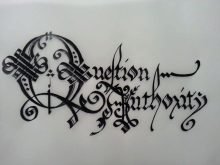
What you need for calligraphy
In order to successfully master this complex type of style, you will need:
- pre-printed alphabets whose letters you want to write;
- a sheet of paper (at first it is preferable to use letters or special calligraphic sheets with ruled lines);
- pencil and eraser;
- a pen with a wide pen (if you are just starting to do calligraphy, you can replace the fountain pen with a special calligraphic pen);
- ink (preferably waterproof);
- blotting paper.
The workplace should be well lit and spacious enough. First of all, you should be comfortable. If possible, arrange for writing a sloping surface.
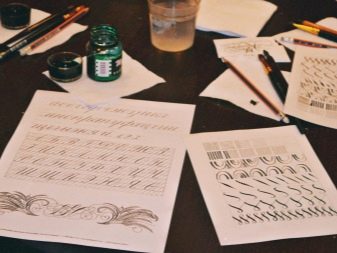
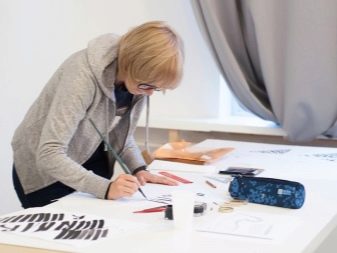
How to write in gothic
The most important rule of gothic calligraphy is while writing letters, the pen should be at an angle of 45 ° to the surface of the paper. This slope provides a "signature" Gothic style.
Most gothic fonts have a rule for element height relative to the thickness of the pen nib. Most lowercase letters are 4.5 pen thick. For capital letters, this ratio is 6 pen thicknesses. Finally, the ascending and descending elements of the letters must be performed with a height of 2 pen thickness. Therefore, for Gothic calligraphy, you will need a recipe or a sheet with a ruler corresponding to your pen. The easiest way is to measure the ratio of the height of the line and the thickness of the pen by drawing a "ladder" or a checkerboard pattern.

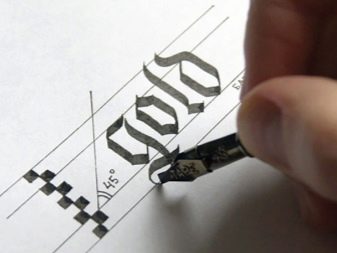
On a sheet ready for writing in each line should be:
- upper and lower lines for lowercase letters;
- two additional lines above and below for the remote parts;
- an extra line at the top (in the middle between the line for lowercase letters and the line of detail) for writing capital letters.
When writing, remember that the pen should always move either from left to right, or from the top to the bottom.
The reverse direction of movement leads to uneven strokes. To draw thin cuts, you need to use the left corner of the pen tip. You can start the practice by mastering one of the simplest Gothic styles. The arrows in the figure indicate the direction of the pen.
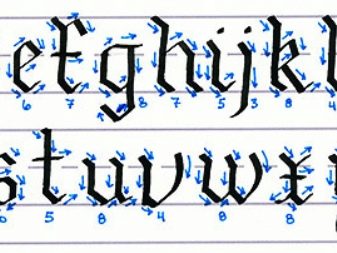
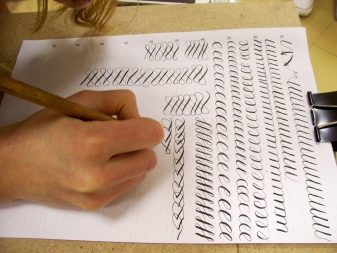
In the next video, you will be able to watch the gothic letter fractura.
